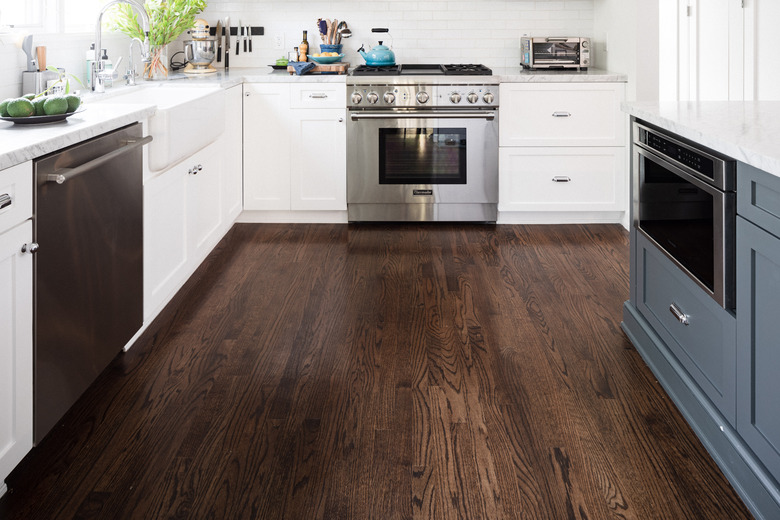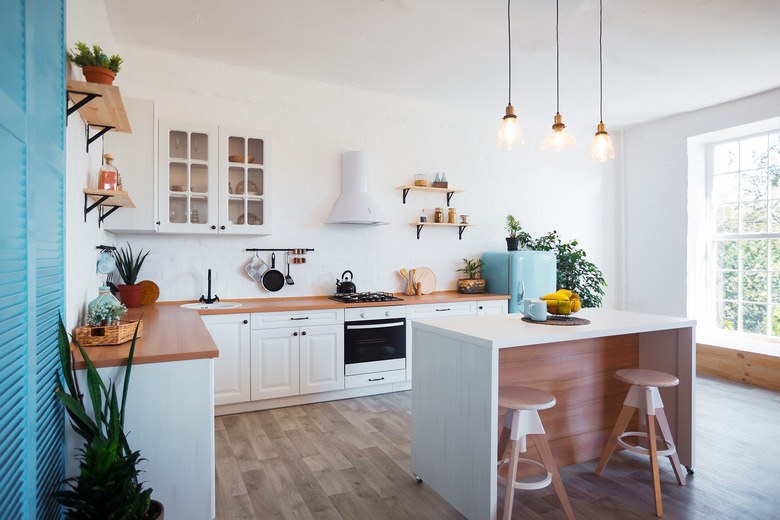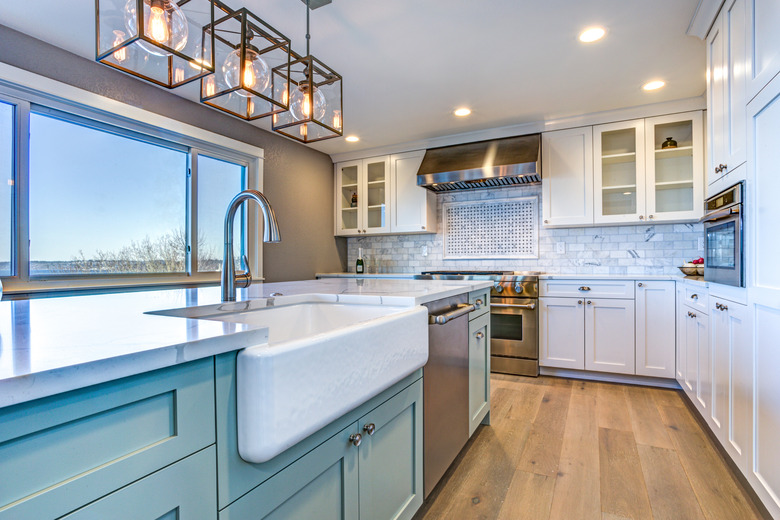Kitchen Laminate Flooring: Pros And Cons
Every type of flooring that is installed in a kitchen space has both pluses and minuses, and laminate flooring is no exception. Laminate is a material that can make a great choice for certain households but may not be quite the right pick for others. While no one can really tell you which flooring options are right for your kitchen area, something that can help is learning more about the pros and cons of laminate wood flooring.
What Is Laminate Flooring?
What Is Laminate Flooring?
Laminate planks are multilayered pieces of flooring that are comprised of several different materials. When these layers are pressed together, they offer the look of hardwood planking. According to the North American Laminate Flooring Association (NALFA), quality laminate floors generally have four to five components that provide both structural integrity and water resistance — although these floors aren't totally waterproof. From the bottom up, they include:
- An underlayment material (sometimes, this is a separate material installed under the entire floor)
- A melamine resin layer
- A high-density fiberboard layer
- A decorative layer
- A top protective layer.
This unique flooring style was originally pioneered by a Swedish company in the 1970s and marketed under the brand name of Pergo. Over the years, the process has continued to evolve, improve and expand to other manufacturers throughout the world. Laminate is now one of the more popular kitchen flooring styles on the market today.
There are some specifics that can help you make an informed choice when the time comes to make a selection for your kitchen floor. Concentrate on these important details while you're making up your mind.
Laminate Flooring Costs
Laminate Flooring Costs
One of the primary reasons homeowners choose laminate flooring for a kitchen space is that it offers the luxurious look of wood without the high price point. Compared to many other types of flooring, laminate can be very cost effective. If you are looking to do a kitchen renovation project and upgrade your current floor with a durable material that looks good, laminate might be a smart choice, and it's significantly less expensive than a real hardwood floor would be to purchase and install.
Although it's a budget-friendly pick, be aware that many people do prefer real hardwood over laminate floors. If you are looking to sell your home in the near future, this may be something to balance when you are deciding on a flooring choice for this room of your home.
Durability of Laminate Floors
Durability of Laminate Floors
Another positive for laminate floors in the kitchen area is the fact that they are very durable. This is a tough material that holds up well to pets and foot traffic, and it's pretty water resistant as well. You won't have to worry about a few drops hitting the floor when you load the dishwasher or panic if your puppy has an accident.
Maintaining laminate floors is a fairly simple process, and no specialized products are required to keep the finish looking good. Just remember that no flooring is completely waterproof, and the tough exterior can still be damaged under the right set of circumstances. High-traffic areas may require a tougher top coat, so be sure to check the manufacturer's specifications to find out if the brand you're considering is a good match for kitchen wear and tear.
One of the biggest cons of laminate flooring is that it can't be sanded. As NALFA points out, hardwood flooring can be sanded and then resealed when it needs a refresh. Certain types of engineered wood-grain floors also have a wear layer that can be lightly sanded when damaged or worn — but not laminates. That said, if you select a laminate product with a durable-enough finish, it can often last for a very long time — sometimes far longer than other flooring options.
The Look of Laminate Flooring
The Look of Laminate Flooring
When laminate floors started out years back, they weren't as realistic looking as they are today. With advances in technology, it has become so much easier to simulate the appearance of wood grain and get the imagery very close to the real thing. Since these planks come in a variety of colors and patterns, you can really dial in the look you want for your kitchen space. Some homeowners even enjoy mixing more than one type of laminate to achieve a unique layout or special flooring detail that would be much harder to replicate with real wood planks.
That said, even with all the progress, nothing can really replace the look of hardwood. Many people love the feel of wood under their feet and the appearance of natural imperfections and other details you can only get when you use real materials. You'll have to decide if this is something that matters to you or if the trade-offs are worthwhile for your kitchen flooring.
Is Laminate DIY Friendly?
Is Laminate DIY Friendly?
One huge benefit of laminate wood flooring is the ease of installation when compared to hardwood and other options, such as tile. It's a very DIY-friendly kitchen flooring material. Most laminates go in with an easy snap-lock installation, and the process doesn't require specialized knowledge to pull off, either. You can choose to do the work yourself if you're handy and motivated to learn how to do the installation properly. Naturally, there are professional installers out there as well if you prefer not to take on the job.
The main thing to keep in mind if you're going to install laminate flooring in your kitchen is that you should read and fully understand all of the manufacturer's instructions. Not only will this assist you in doing a good job on the project, but it's also the best way to make sure the warranty will be honored if there is an issue with the material once it has been put in.


